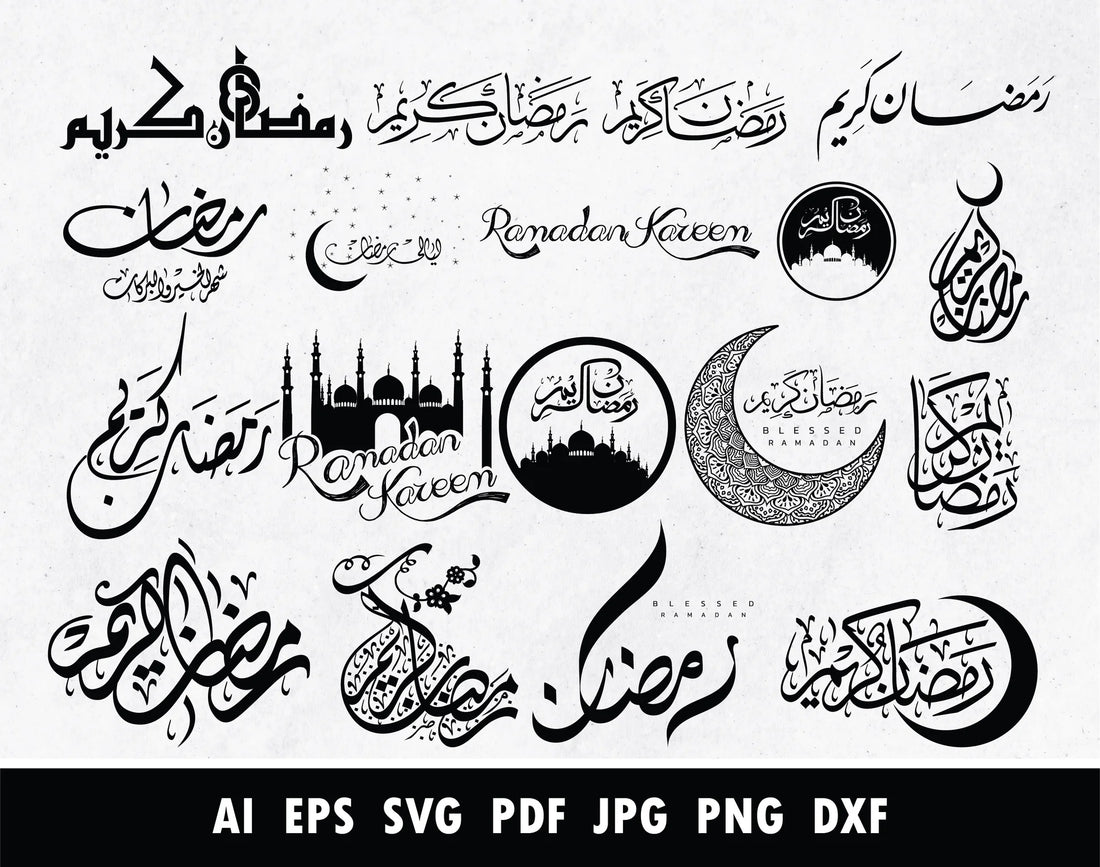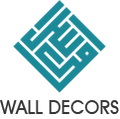Ramadan Mubarak is a phrase commonly used to greet others during the holy month of Ramadan, a time for fasting, prayer, and reflection for Muslims all over the world. During this time, the beauty of Arabic calligraphy is often displayed on posters, cards, and other materials as a way to celebrate and spread the spirit of the season.
Ramadan calligraphy typically includes the phrase "Ramadan Mubarak" in elegant Arabic script, surrounded by intricate designs and patterns. This type of calligraphy is created using traditional tools like the reed pen (qalam) and natural ink, which give the letters a flowing, organic feel.
One of the most notable aspects of Ramadan calligraphy is the emphasis on geometric shapes and symmetrical lines. This is in keeping with the Islamic tradition of geometric design, which is used to create a sense of balance and harmony in art and architecture.
Another important feature of Ramadan calligraphy is the use of arabesques, decorative elements that take the form of intertwined vines and leaves. These elements are often used to fill the spaces between the letters and to add depth and interest to the design.
The fashion later developed into many varieties, as well as floral, foliated, plaited or interlaced, bordered, and sq. kufic. In the ancient world, though, artists would typically get around this prohibition by victimization strands of small writing to construct lines and images. penmanship was a valued art form, whilst an ethical good. AN ancient Arabic expression illustrates now by in spades stating that "Purity of writing is purity of the soul."
Muslim calligraphy isn't restricted to strictly spiritual subjects, objects, or spaces. Like all Islamic art, it encompasses a various array of works created in an exceedingly large choice of contexts. The prevalence of calligraphy in Islamic art is not directly relating to its non-figural tradition; rather, it reflects the position of the notion of writing and written language in Islam. For instance, the Muslim prophet Muhammad is said to possess said: "The very first thing God created was the pen."
Islamic penmanship developed from 2 major styles: Kufic and Naskh. There are many variations of each, in addition as regionally specific styles. Arabic or Persian calligraphy has also been incorporated into fashionable art, starting with the post-colonial amount within the Middle East, as well because the newer sort of calligraffiti.
arabic calligraphy
Arabic calligraphy is a unique form of art and writing that has a rich cultural and historical heritage. This ancient art form combines the beauty of handwriting with the symbolic representation of language, creating a visual expression of words that is both aesthetically pleasing and meaningful. In this blog, we will explore the history, styles, and techniques of Arabic calligraphy and its significance in the Islamic world.
Arabic calligraphy has its roots in the 7th century and has since evolved into a diverse and sophisticated form of artistic expression. It was used to transcribe the Quran, religious texts, and historical documents, as well as to create beautiful works of art. Calligraphers became respected artists, often commissioned to create illuminated manuscripts, architectural decoration, and personal gifts.
One of the defining features of Arabic calligraphy is the use of the Arabic script, which is characterized by its fluid, cursive form. The Arabic script is also unique in that it is read from right to left, giving calligraphy an aesthetic quality that is distinct from other forms of calligraphy.
Arabic calligraphy is not just limited to written words. Calligraphers also use their skills to create beautiful patterns and designs, which can be found in a variety of media, from illuminated manuscripts to architectural decoration and personal gifts. These designs often incorporate geometric shapes and abstract forms, reflecting the beauty and harmony of the Islamic world.
Arabic calligraphy is a unique and rich art form that has been an integral part of the Islamic world for centuries. Its combination of beautiful handwriting, symbolic representation of language, and cultural significance make it a beautiful and meaningful form of artistic expression. Whether used for religious texts or for decorative purposes, Arabic calligraphy continues to be an important part of the Islamic cultural heritage.
calligraphy in islamic architecture
Calligraphy has been a central aspect of Islamic art and architecture for centuries. This ancient form of writing combines both aesthetics and religious symbolism to create beautiful works of art that can be found in mosques, palaces, and other monumental structures throughout the Islamic world. In this blog, we'll explore the role of calligraphy in Islamic architecture and the various styles and techniques used in this art form.
One of the key reasons why calligraphy is so important in Islamic architecture is because of its religious significance. The Arabic script is considered sacred in Islam and is considered a form of communication with the divine. As such, calligraphy is often used to inscribe verses from the Quran and other Islamic texts in mosques and other religious structures.
The use of calligraphy in Islamic architecture is also closely tied to the concept of decoration and adornment. In Islamic art, the emphasis is on creating beauty while avoiding the representation of living creatures, which is forbidden in Islam. Calligraphy serves as a beautiful and intricate form of decoration that is both elegant and symbolic.
The use of calligraphy in Islamic architecture is not limited to inscribing religious texts. Calligraphers also use their skills to create beautiful patterns and designs that can be found in intricate tile work, wood carvings, and metalwork. These designs often incorporate intricate geometric shapes and abstract forms that reflect the beauty and harmony of the Islamic world.
Calligraphy plays a central role in Islamic architecture, combining religious symbolism and aesthetic beauty to create works of art that are both meaningful and beautiful. Whether used to inscribe religious texts or to create intricate designs, calligraphy continues to be an important and integral aspect of Islamic architecture and culture.

